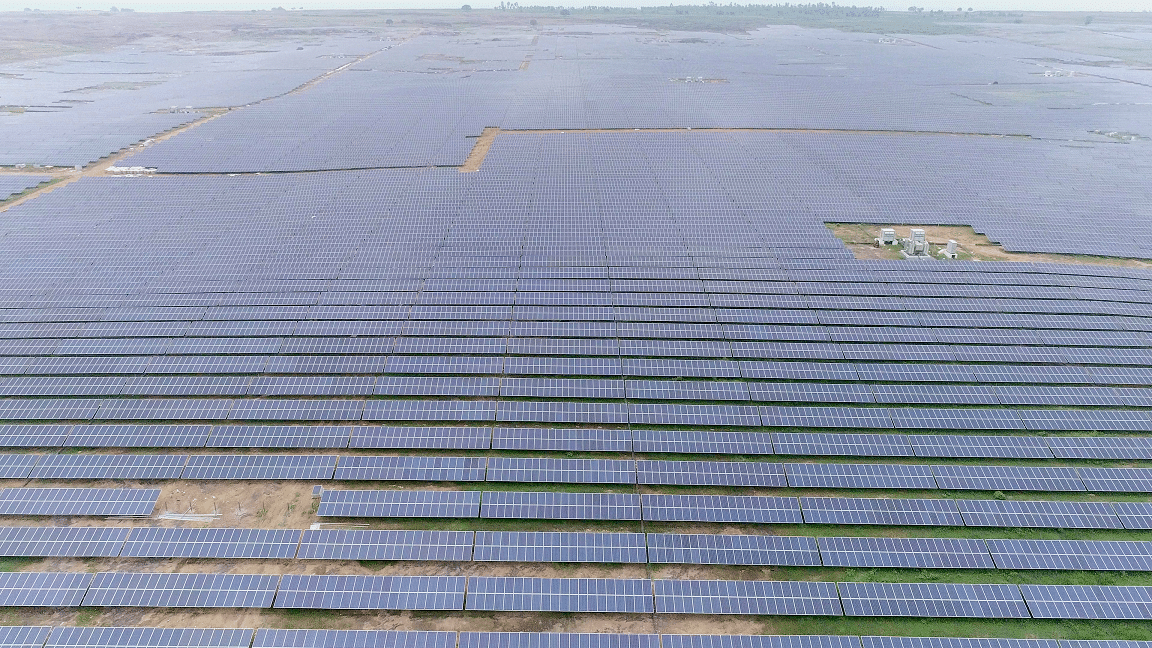India’s current emission mitigation policies for power, residential and transport sectors have already mitigated 440 million tonnes of carbon dioxide (MtCO2) between 2015 and 2020, and are on track to save 3,950 MtCO2 emissions between 2020 and 2030, according to a new, independent study by the Council on Energy, Environment and Water (CEEW). This reduction is equivalent to nearly 1.6 times the European Union’s CO2 emissions in 2023 and is a significant achievement given India’s commitment to reducing emissions by 1 billion tonnes by 2030 at COP26 in Glasgow.
The study, Impact of Select Climate Policies on India’s Emissions Pathway, said the highest reduction due to the policy interventions is observed in India’s power sector.
CEEW’s first-of-its-kind modelling assessment shows how India’s climate policies have collectively saved emissions and pushed India towards a higher share of renewables in its energy mix, increased adoption of electric vehicles, and improved energy efficiency in domestic air conditioning and lighting. It also examines how policies, like the National Solar Mission, FAME I & II schemes, Standards & Labelling scheme, and UJALA programme, will continue to affect future energy demand and supply.
According to the study, in the power sector alone, policies promoting renewable energy are expected to drive a 24% decline in coal-based electricity generation by 2030, relative to a no-policy scenario. This is equivalent to avoiding 80 GW of coal-based power plants that would have otherwise been installed to meet India’s burgeoning power demand. Further, with strategic support and competitive tenders, the share of combined solar and wind power in the energy mix for India is projected to go up to 26% by 2030 and 43% by 2050, up from only 3% in 2015. This will decisively reduce reliance on coal, which is currently the source of nearly half of the country’s total carbon dioxide emissions.
This shift is crucial for bending India’s emissions curve downward, but achieving net zero by 2070 will require even more ambitious action.
Dr Arunabha Ghosh, CEO, CEEW, said, “India has demonstrated formidable climate leadership over the past decade, from scaling renewables to advancing energy efficiency and electric mobility through policies. This has not only diversified our energy mix and doubled down on energy security, but also created new markets and significantly cut India’s carbon dioxide emissions. The road to net zero needs bolder action, and the foot cannot be taken off the pedal now. To enable the Global South’s efforts, COP29 must ensure climate finance flows to developing countries like India, without riders. This would deepen renewable markets and a sustainable future for all.”
In the transport sector, the CEEW study found that policies such as the FAME (2015-2022) schemes have set the stage for significant growth in the electric vehicle market. Projections show that by 2030, electric two-wheeler and four-wheeler sales could make up 19% and 11% of their respective segments. This could lead to a 13% reduction in oil and gas demand in this decade. By 2050, these figures are expected to rise dramatically to above 65% for both EV categories, resulting in a 55% reduction in the sector’s oil and gas demand relative to the no policy scenario.
In the residential sector, the 2006 Standards and Labelling programme has led to significant energy efficiency improvements in air-conditioning and cooling. The CEEW study found that air conditioning-related electricity consumption in Indian households is projected to double between 2020 and 2030 and then soar by almost ten times by 2050. This growth would be driven not just by hotter summers and higher incomes but also due to lower electricity prices on the back of higher renewable energy penetration.
Meanwhile, the UJALA programme, which focuses on pushing energy-efficient LEDs in residential households, is projected to reduce residential lighting electricity use by 48% by 2030 and 59% by 2050 relative to the ‘no policy’ scenario.
Dr Vaibhav Chaturvedi, Senior Fellow, CEEW, and lead author of the study, said, “Our findings show that current policies have set India on the right path. New policies that build on existing climate policies are already being formulated to accelerate efforts to meet the 2070 net-zero target. Immediate steps should include scaling up investments in renewable energy, enhancing the domestic Carbon Credit Trading Scheme, and focusing on energy efficiency in key sectors like industry, transport and buildings.”
“The recently announced PM-EDRIVE scheme will build on the gains made by the FAME initiative, accelerating the adoption of electric vehicles and driving deeper emission reductions in the transport sector. These actions will be instrumental in decisively bending India’s emissions curve towards our net-zero goal and ensuring its energy security in the long run.”
This content is protected by copyright and may not be reused. If you want to cooperate with us and would like to reuse some of our content, please contact: editors@pv-magazine.com.









By submitting this form you agree to pv magazine using your data for the purposes of publishing your comment.
Your personal data will only be disclosed or otherwise transmitted to third parties for the purposes of spam filtering or if this is necessary for technical maintenance of the website. Any other transfer to third parties will not take place unless this is justified on the basis of applicable data protection regulations or if pv magazine is legally obliged to do so.
You may revoke this consent at any time with effect for the future, in which case your personal data will be deleted immediately. Otherwise, your data will be deleted if pv magazine has processed your request or the purpose of data storage is fulfilled.
Further information on data privacy can be found in our Data Protection Policy.